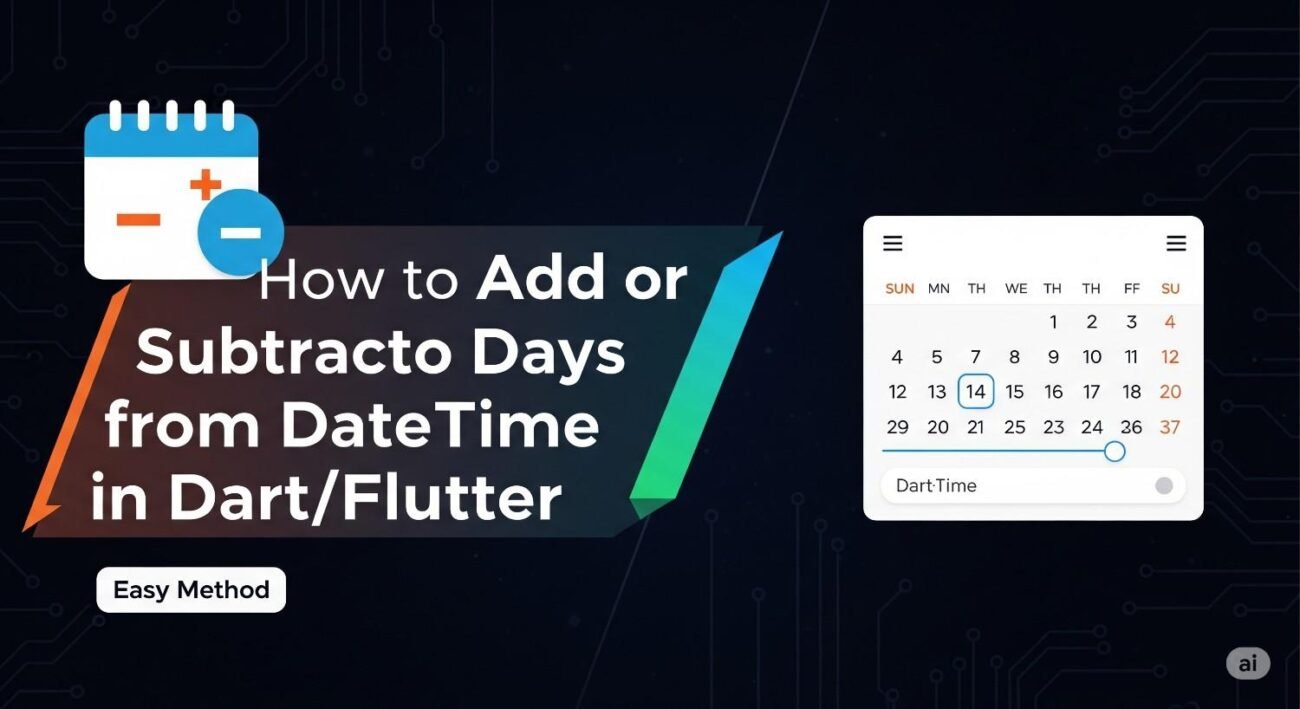Manipulating dates is a fundamental task in almost any application. Whether you’re calculating an expiration date, figuring out a past event, or scheduling future notifications, you’ll inevitably need to add or subtract days from a DateTime object.
Fortunately, Dart makes this process incredibly simple and intuitive. This guide will show you the correct way to do it.
The Core Concept: Using Duration
The key to all DateTime arithmetic in Dart is the Duration class. A Duration represents a span of time. You can’t just add the number 10 to a DateTime; you must add a Duration of 10 days.
Creating a duration for a specific number of days is straightforward:
const durationOfTenDays = Duration(days: 10);
const durationOfOneWeek = Duration(days: 7);Adding Days to a DateTime
To add time to a date, use the add() method. This method takes a Duration object and returns a new DateTime instance with the duration added.
Your original DateTime object remains unchanged.
Code Example
void main() {
// Get the current date and time
final now = DateTime.now();
print('Original Date: $now');
// Example Output: Original Date: 2025-07-05 17:24:14.000
// Add 15 days to the current date
final futureDate = now.add(const Duration(days: 15));
print('15 Days Later: $futureDate');
// Example Output: 15 Days Later: 2025-07-20 17:24:14.000
}
The DateTime class automatically handles all the complex logic, like changing the month or year correctly.
Subtracting Days from a DateTime
To go back in time, use the subtract() method. It works just like add(), taking a Duration and returning a new DateTime instance in the past.
Code Example
void main() {
// Get the current date and time
final now = DateTime.now();
print('Original Date: $now');
// Example Output: Original Date: 2025-07-05 17:24:14.000
// Subtract 30 days from the current date
final pastDate = now.subtract(const Duration(days: 30));
print('30 Days Before: $pastDate');
// Example Output: 30 Days Before: 2025-06-05 17:24:14.000
}
Key Takeaways
- Use
add()andsubtract(): These are the dedicated methods forDateTimearithmetic. - Pass a
Duration: Always specify the amount of time using aDurationobject (e.g.,Duration(days: 5)). - Immutability is Key:
add()andsubtract()do not change the originalDateTimeobject. They always return a new instance, which is a safe and predictable pattern.
